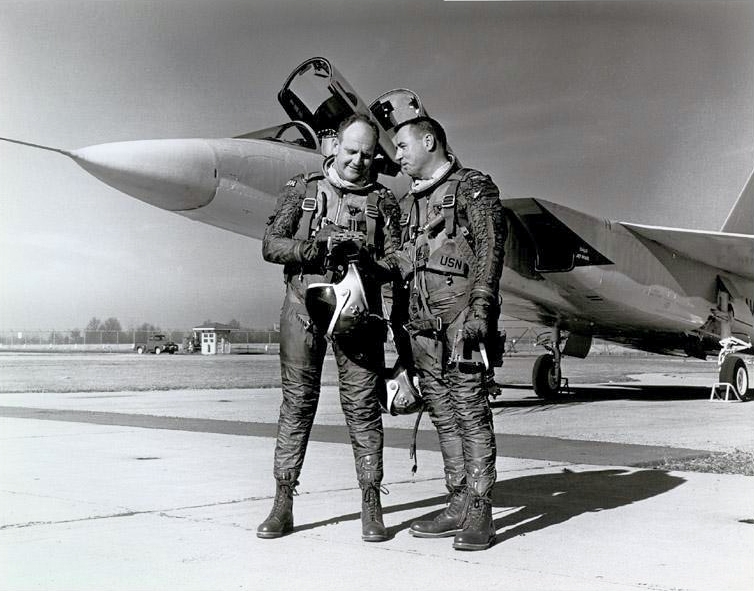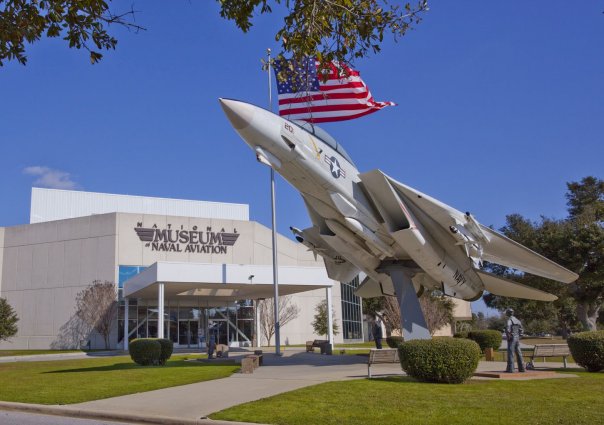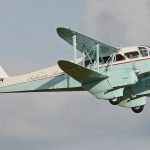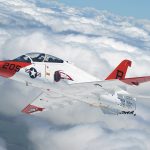
Later known as the A-5, the A3J Vigilante was developed by North American Aviation as a carrier-based supersonic, long-range strike aircraft. The Vigilante would come with such innovative features as being the first supersonic bomber to be designed with a slim forward fuselage and the first with fully variable wedge-type side air intakes for its two General Electric J79 afterburning turbojet engines. The A3J was also one of the largest carrier-borne aircraft built up to that point, with a length of 76 ft 6 in (23.32 m), wingspan of 53 ft 0 in (16.16 m), and a height of 19 ft 5 in (5.91 m). It was also fitted with a laundry list of then-state of the art electronic equipment, and was fitted with a unique internal bomb bay between the two engines that would have the Vigilante shoot out a free-fall nuclear bomb (ranging from the B27, B28, and B43 bombs) from its tail, also with jettisoning two disposable fuel tanks and its tail cone.
In the midst of the Cold War, the United States and the Soviet Union were in the middle of a fierce rivalry over record setting with military aircraft. If an aircraft could set a new record that could be recognized by the World Air Sports Federation (Fédération Aéronautique Internationale), it was also capable of being that much faster and far reaching than an opposing one. Setting records in the United States was also done, in the case of the Vigilante, to secure further funding approved by Congress to continue the development and deployment of the North American A3J. It was at this point that an A3J Vigilante was flown to Edwards Air Force Base to break the Soviet’s altitude record of 20,456 meters (67,096 feet), set by Russian aviator Vladimir Smirnov on July 13, 1959, flying a Yakovlev Yak-25RV while carrying a 1,000 kg payload.
On December 13, 1960, Commander Leroy Anthony Heath (pilot) and Lieutenant Henry L. “Larry” Monroe (radar navigator) climbed into their A3J Vigilante, carrying a 1,000 kg payload in the plane’s linear bomb bay, and donned in full pressure suits. After takeoff, they sped to Mach 2.1 before going into a vertical climb at full power, with their progress being closely monitored by the National Aeronautic Association. Heath and Monroe climbed up to 27,874 meters (91,450 feet), breaking the Sovit record by 7,418 meters (24,337 feet). At the highest point of their flight, the Vigilante was flying so high that slowed to 400 mph, and the air was so thin that the engines flamed out and the wings no longer generated lift. It was at this point that Heath and Monroe momentarily experienced weightlessness, and the aircraft rolled onto its back. However, the phenomenon of the aircraft rolling inverted without power had already been experienced in previous flights, and so Heath released the controls, and the aircraft regained control naturally during its descent back into the thicker air of the lower atmosphere.

Three days after they completed their mission, Leroy Heath and Henry Monroe were decorated by the Secretary of the Navy, William B. Franke, who awarded Commander Heath the Distinguished Flying Cross, and Lieutenant Monroe, the Air Medal. Their altitude record would stand for over 13 years. As for the Vigilante, it was later redesignated as the A-5 in 1962, and with the Navy switching to submarine-launched missiles as its primary means of nuclear deterrence/strike capability, the Vigilante was largely relegated to reconnaissance missions, where it would see action during the Vietnam War. However, with the deployment of the RF-8 Crusader and the RF-4 Phantom II, combined with the transfer of recon duties to fighters equipped with reconnaissance pods meant that the last Vigilantes were retired in 1979, with some of these being preserved for display at aviation museums and retired aircraft carriers made into museum ships around the United States. Even if its combat reconnaissance record is the most remembered aspect of the North American A3J/A-5 Vigilante, the achievement shared by Leroy Heath and Henry Monroe gives the Vigilante the distinction of being one of the US Navy’s highest-flying aircraft to ever fly from the deck of an aircraft carrier.
Today in Aviation History is a series highlighting the achievements, innovations, and milestones that have shaped the skies. All the previous anniversaries are available HERE
































Leroy Heath was my 1980 Alegebra professor at Embry-Riddle in Daytona. He told me that when they lost aerodynamic control at the top of their climb Larry Monroe asked “Leroy, are you getting it?” To which Heath replied “I’m working on it.” He was quite a guy and I have a US Naval Institute picture of them on my wall in remembrance. Leroy Heath passed in 2003. RIP, Leroy.
That’s a great connection and story! Thanks for sharing it, Richard.
My father H.L.Roy) documented the A3J-RA5C from it’s inception. NAA MOTION PICTURE UNIT COLUMBUS OHIO
I have hundreds of negatives, prints and several 16mm films. gregorymills25@yahoo.com hit me up if your interested in some of that double J79 fun.